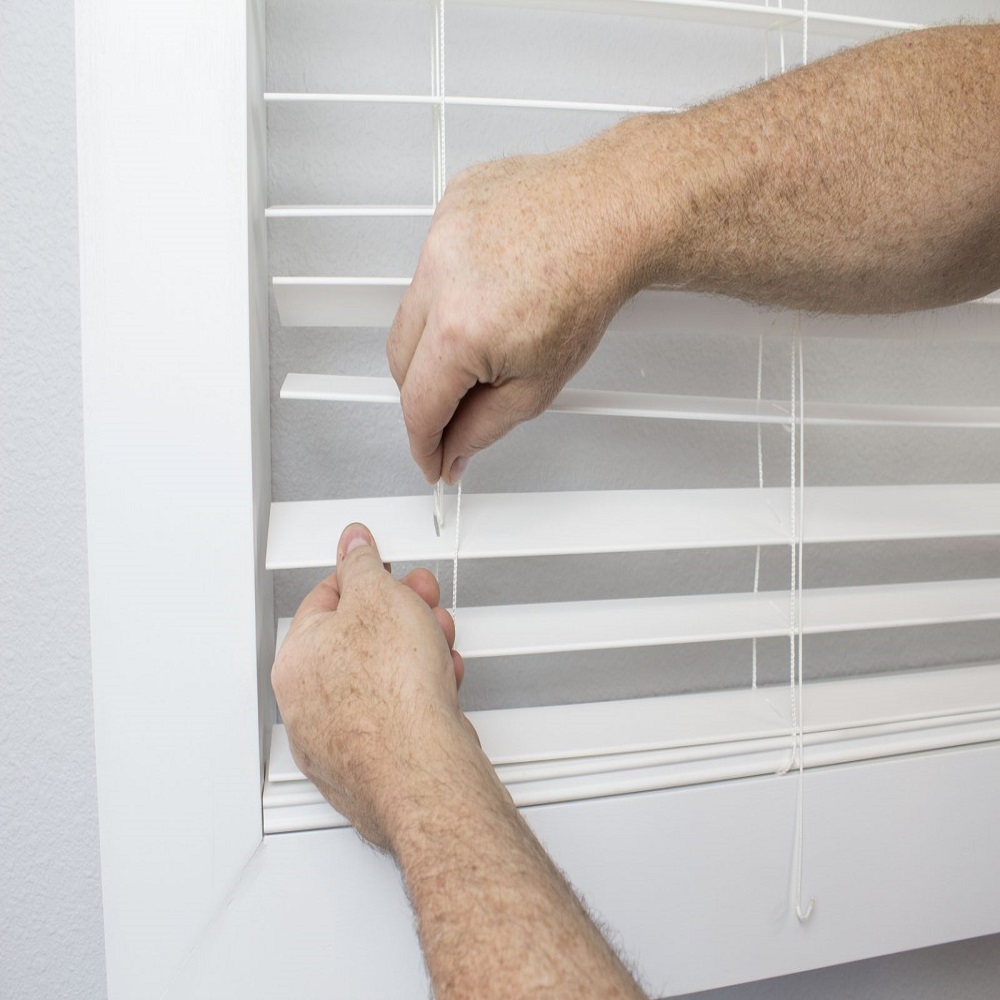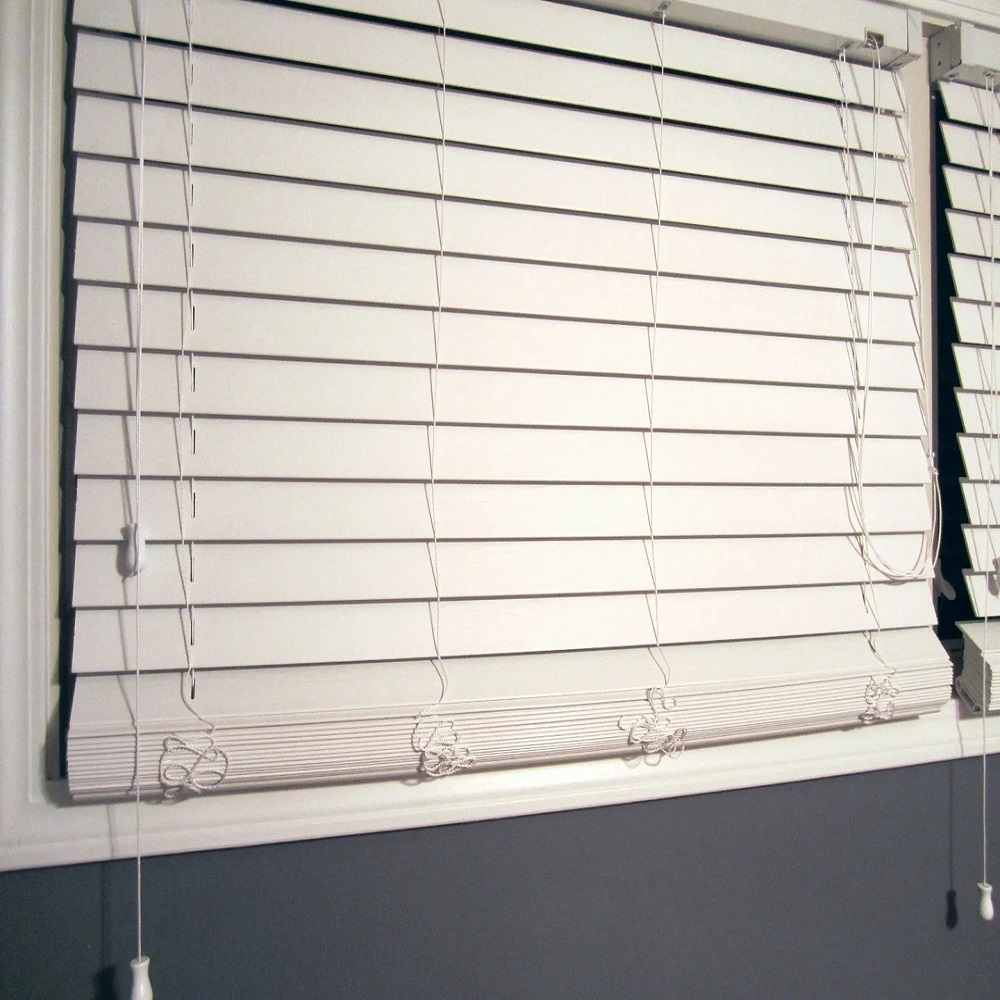Reasons to Shorten Your Blinds
Shortening your blinds can improve your home in several ways. First, blinds that are too long can be cumbersome, getting in the way and even posing safety hazards. Adjusting their length to fit your windows perfectly will eliminate these issues, making your home safer and more functional.
When Blinds Become a Nuisance
Blinds that are too long can cause problems. They bunch up on the floor, collect dust, and obstruct window mechanisms. By shortening them to the right size, you avoid these nuisances and keep your windows looking clean and tidy.
The Aesthetic and Functional Benefits of Properly Fitted Blinds
Sleek, well-fitted blinds enhance your home’s beauty. They provide the right amount of light and privacy without compromising on style. Shortened blinds offer a custom look without the custom price, elevating the overall aesthetic of your space.

Assessing the Type of Blinds
Before starting the shortening process, it’s important to know your blind type. Different blinds require different methods.
Shortening Horizontal Blinds
Horizontal blinds usually have slats that can be removed and a bottom rail that can be adjusted. Measure carefully and follow the steps to remove the excess length. Refer to the provided step-by-step guide to ensure you do it correctly.
Can Vertical Blinds Be Shortened?
Vertical blinds are trickier. They have a different structure and often need specialized repair rather than shortening. Check the manufacturer’s instructions or contact a professional for advice.
Special Considerations for Various Blind Materials
Different materials like wood, faux wood, or aluminum require careful handling. Make sure to use the right tools and take your time. Extra caution is needed to avoid damage while shortening blinds.
Preparing to Shorten Blinds
Before diving into the process of shortening your blinds, proper preparation is key. Ensuring you have the right tools and materials at hand will make the task smoother and help you avoid common pitfalls.
Necessary Tools and Materials
To start, gather the following essential items:
- Measuring tape for accurate sizing
- Pencil or marker to note measurements
- Scissors or a sharp utility knife for cutting
- Flathead screwdriver to adjust components
- Pliers for a firm grip while tying knots
- Ladder or step stool for high windows if needed
Having all tools within reach will prevent interruptions and streamline your workflow.
Measuring and Marking Correctly
Measuring correctly is the cornerstone of successfully shortening blinds. Here’s how to do it:
- Extend the blinds fully to see the total length.
- Decide on the desired length for your blinds.
- Use a measuring tape to find the extra length to remove.
- Mark this length with your pencil or marker.
Double-check measurements to avoid mistakes. Precise markers will guide you as you cut and adjust your blinds. Following these preparatory steps will set you up for an efficient and successful shortening project.
The Shortening Process for Horizontal Blinds
Detailed Steps to Remove Excess Slats
To start shortening your blinds, fully extend them. Identify how many slats to remove. Measure from the bottom to your desired length. Use a pencil to mark this spot on the strings. Carefully remove the bottom rail. Slide out the excess slats gently from the strings. Keep the slats you may need later. Always work with caution to avoid damage.
Attaching the Bottom Rail Correctly
With the excess slats out, it’s time to reattach the bottom rail. Thread the strings through the rail’s designated holes. Ensure the rail is level with your blinds. Tie the strings securely. Use pliers for a tight knot. Replace the rail end caps. These steps keep the blinds neat and functional.
Final Adjustments and Testing
After attaching the bottom rail, test your blinds. Raise and lower them to check their movement. Make sure the bottom rail moves smoothly without catching. If it doesn’t, recheck your knots and the rail’s position. Adjustments are sometimes necessary for smooth operation. Now enjoy your neatly fitted blinds!

Troubleshooting Common Problems
When shorten blinds, you might encounter a few obstacles. Let’s discuss common issues and fixes.
Addressing Uneven Cuts
Uneven cuts can throw off blind balance. Here’s how to handle them:
- Examine each cut string carefully.
- If you spot unevenness, trim gently to even out.
- Use sharp scissors for clean cuts.
- Compare both sides frequently to ensure symmetry.
Take your time to prevent errors. Even cuts are crucial for proper blind function.
Ensuring Smooth Operation Post-Shortening
After shortening, blinds should operate smoothly. If not, check the following:
- Ensure knots are tight and even.
- Confirm the bottom rail is level.
- Check that all slats are secure on their strings.
- Test raising and lowering several times.
Adjust as needed. Smooth operation means successful DIY shortening. Your blinds are now ready for use.
Alternative to DIY: Opting for Custom Blinds
While the DIY approach to shortening blinds can seem cost-effective, custom blinds offer unparalleled benefits. Custom-fitted blinds match your windows perfectly. Their precise fit prevents uneven light gaps and ensures smooth operation. Another plus is the wide range of styles and materials you can choose from. It’s a simple way to upgrade your space without the hassle of DIY.
Benefits of Choosing Custom-Fitted Blinds
Custom blinds add to your decor and comfort. They give a sleek, professional look that’s hard to achieve with DIY. These blinds are built to last, meaning you won’t need to replace them soon. Custom options also allow for better insulation and light control. This can help reduce energy bills.
Custom blinds often come with warranties. These protect against defects or issues, adding peace of mind. Choosing custom means you get exactly what you want. You can pick colors, patterns, and features that fit your style.
When to Consider Professional Help
Think about professional help if your blinds are costly or complex. If you lack the time or tools for a DIY project, experts can save you both. Professionals can measure, fit, and install blinds quickly and correctly. This avoids mistakes that could damage your blinds or windows.
If your blinds have unique features like motorization, professional installation is best. Complex features often need an expert’s touch. This ensures they work as designed and avoids warranty voiding. In the end, the extra cost for professional help can save you time, effort, and future repair costs.

Maintenance Tips for Shortened Blinds
To ensure your shorten blinds last long and function well, regular maintenance is key. Here are simple steps to keep them in top condition.
Keeping Blinds Functioning Smoothly
Consistent care keeps blinds working like new. Follow these tips:
- Regularly dust the slats with a soft cloth or brush attachment.
- Check the cords for fraying or wear, and replace if needed.
- Gently lubricate any moving parts to prevent sticking.
- Keep the mechanisms free of dirt and debris buildup.
Long-Term Care for Shortened Blinds
For longevity, take these extra steps:
- Once a year, deep clean your blinds according to the material type.
- Inspect the slats and rails to ensure everything is aligned and secure.
- If blinds get stuck, avoid forcing them. Check the cords and slats for issues.
- Handle blinds gently when raising or lowering them.
With proper care, your shortened blinds will look great and work well for years to come.
Troubleshooting Common Issues
If you experience problems with your shortened blinds, here are some common issues and solutions:
1. Blinds Won’t Open or Close
- Check Cords: Ensure there are no tangles in the cords; untangle gently if necessary.
- Inspect Mechanism: Look for any obstructions in the headrail that could be preventing movement.
2. Slats Are Misaligned
- Realign Manually: Gently push the slats back into alignment. If they remain crooked, check for twisted cords or a faulty tilt mechanism.
3. Fading or Discoloration
- Limit Sun Exposure: Use UV-blocking window film or curtains to protect blinds from direct sunlight.
- Rotate Slats: Rotate the slats occasionally to ensure even exposure to light.
By following these maintenance tips and troubleshooting common issues, you can ensure that your shorten blinds remain functional and visually appealing. Regular care will help enhance the lifespan of your blinds, keeping your living or working space comfortable and stylish for years to come.








